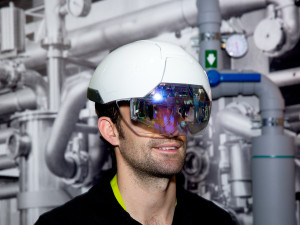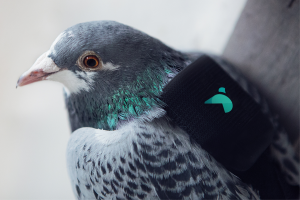Ireland to be the first IoT Island! It looks as though Ireland will become the first smart island....
Engineered to Succeed, Designed to Fail
Engineered to Succeed, Designed to Fail
The Problem With Bad IoT Design
No One Left Behind
The Internet of Things (IoT) is huge. As Google Chairman Eric Schmidt said at the World Economic Forum, “"[T]he Internet will disappear. There will be so many IP addresses, so many devices, sensors, things that you are wearing, things that you are interacting with, that you won't even sense it. It will be part of your presence all the time. Imagine you walk into a room, and the room is dynamic. And with your permission and all of that, you are interacting with the things going on in the room." With startups forming to create connected devices for Pacifiers , Cows , and even Socks there is no business left unaffected by the Internet of Things. Everyone, in every industry should be looking into major growth opportunities that IoT can provide your business.
The Problem With IoT

Hardware Engineers are not Designers. For good reason, the appeal to early adopters of IoT products is not a flashy screen or nice UI, it lies in the actual specifications. The engineers of these products live in a bubble, creating products and applications that appeal to people just like themselves. This closed loop often leads to a major problem, bad IoT design. This problem with IoT, and tech companies in general spawns an important question: New technology is for nerds, what does it take to make it cool?
Make Tech Cool Again
From an early stage, engineers must partner with hardware designers. These two sides of the production process should not act as separate entities, design should not be an afterthought. In order to appeal to the masses, connected devices/ IoT projects must have not just a useful, powerful product, it must have great hardware design. IoT companies must reach the consumers that matter. They must leave the geeky image behind and put forth major efforts in attractive, practical design.
The Good, The Bad, The Ugly
Companies can create the most amazing product, with a plethora of features that blow even the toughest critic away. However, without proper design that appeals to everyday people, the product is doomed to fail. Here, highlighted are IoT projects that have great engineering, great technical specifications and vision. However, some are lacking visually in what we believe to be an equally important facet of product development, leading to bad IoT design.
The Good

-
Fitbit: There is a reason why the FitBit is the best selling IoT wearable. The simple, practical design pushes it above the competition. Where comparable tech overcomplicates features, screens, etc.. FitBit has excelled in the niche activity tracker market by sticking to it's core feature set and what the user's of the product really want.
-
Apple Watch: Apple's break into the wearable market came as a huge success. Apple has always focused on simple design, as Steve Jobs famously put it, "Simple can be harder than complex: You have to work hard to get your thinking clean to make it simple." In a crowded Mp3 player market, Apple was able to break through by creating an impossibly simple Mp3 player, the iPod. In a smartphone market that was dominated by the practical, yet aesthetically inadequate Blackberry, Apple was able to introduce a practical and beautiful phone with just one button. Now, in the wareable space, the Apple Watch has been able to grasp the simplicity of a wristwatch with the usability of a smartphone.
The Bad
-
At Bluefin we believe that there is no such thing as a bad IoT project. IoT is still a growing market, and in any growing market there is always room for innovation. This means companies will be trying new things, experimenting with strange ideas etc.. to come up with a breakthrough product. That is why we say here that there is no IoT project too strange or too small. In the hands of excellent engineers and experienced product professionals there is always a chance for an IoT project to succeed. However, we do believe in bad IoT Design. That is where "The Ugly" comes into play...
The Ugly

-
The Daqri Smart Helmet: Daqri describes themselves as, “The human-machine interface company changing the future of work.” The smart helmet is an amazing piece of engineering. With thermal vision, data visualization and 4D work instructions Daqri hopes to change the way the way we manufacture and build. There is a robust support network as well as a custom application for developers to integrate your own workpackages into the Smart Helmet. However, we wonder, why, when the helmet is full of such amazing technical feats, must it look more like a fighter pilot helmet than a simple workplace hardhat. After Google’s deep mind AI AlphaGo beat world Champion Go Player Lee Sedol many people claimed that our Jobs will be taken by artificial intelligence in the near future. If the only alternative to AI are connected devices that look like this smart helmet I am pretty sure employees will be lining up to have their jobs taken rather than have to wear this on their head. Seriously, This helmet looks like a slightly more high tech version of this famous Official Star Trek Toy Helmet made in 1976.

-
Pigeon Air Patrol: Pigeon Air Patrol has created a wearable pollution tracker
-
for pigeons. This project focuses less on the consumer aspect and more on practical design. The concept of pigeons tracking air pollution in London is both innovative and intriguing. However, it seems as if the hardware design has come as an afterthought. Why does the backpack need to look like it’s from a sci-fi movie? The engineering and mission are top of the line. Why have we let design fall to the back of our minds?

